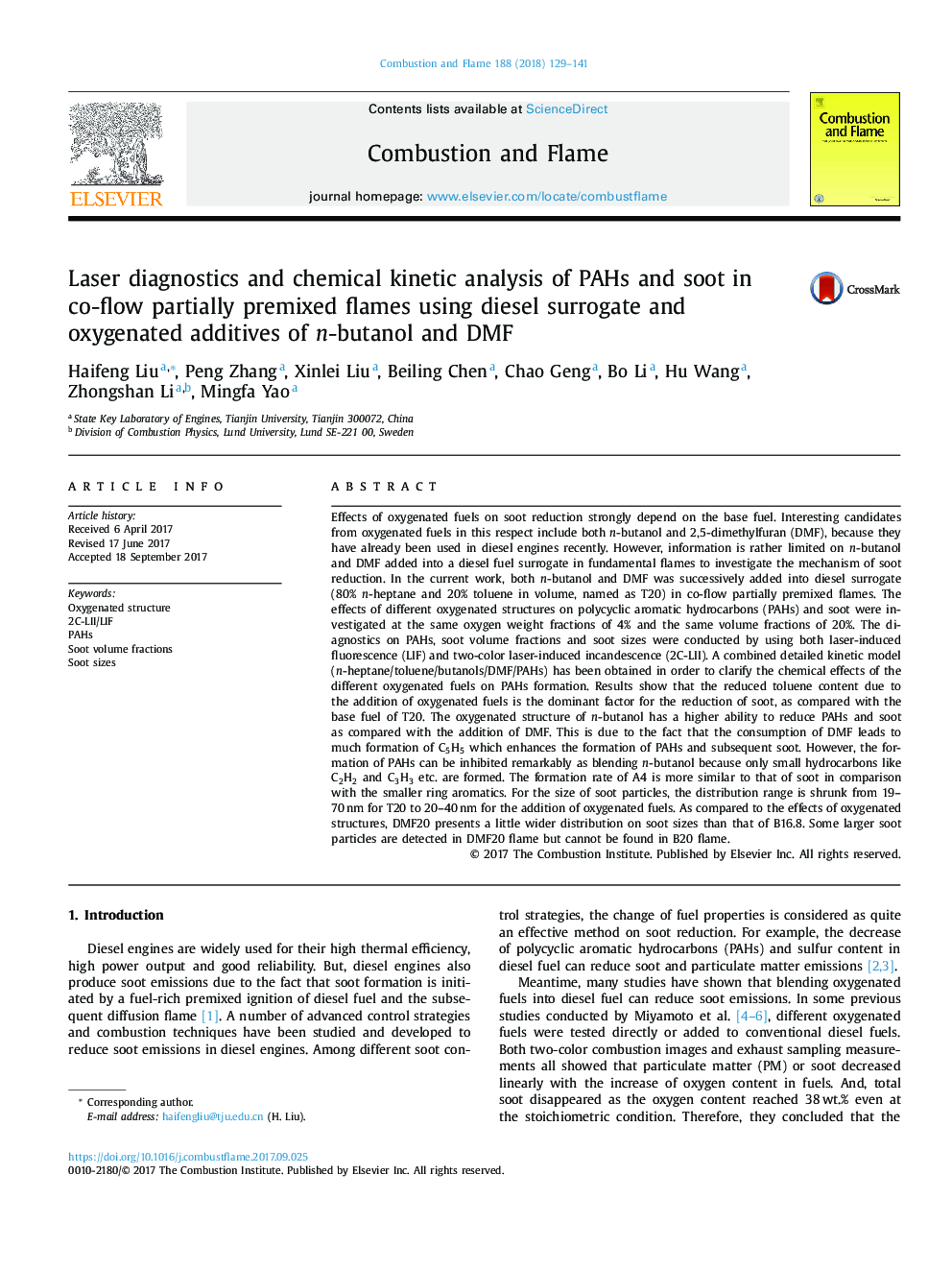| کد مقاله | کد نشریه | سال انتشار | مقاله انگلیسی | نسخه تمام متن |
|---|---|---|---|---|
| 4764336 | 1423549 | 2018 | 13 صفحه PDF | دانلود رایگان |
عنوان انگلیسی مقاله ISI
Laser diagnostics and chemical kinetic analysis of PAHs and soot in co-flow partially premixed flames using diesel surrogate and oxygenated additives of n-butanol and DMF
دانلود مقاله + سفارش ترجمه
دانلود مقاله ISI انگلیسی
رایگان برای ایرانیان
کلمات کلیدی
موضوعات مرتبط
مهندسی و علوم پایه
مهندسی شیمی
مهندسی شیمی (عمومی)
پیش نمایش صفحه اول مقاله

چکیده انگلیسی
Effects of oxygenated fuels on soot reduction strongly depend on the base fuel. Interesting candidates from oxygenated fuels in this respect include both n-butanol and 2,5-dimethylfuran (DMF), because they have already been used in diesel engines recently. However, information is rather limited on n-butanol and DMF added into a diesel fuel surrogate in fundamental flames to investigate the mechanism of soot reduction. In the current work, both n-butanol and DMF was successively added into diesel surrogate (80% n-heptane and 20% toluene in volume, named as T20) in co-flow partially premixed flames. The effects of different oxygenated structures on polycyclic aromatic hydrocarbons (PAHs) and soot were investigated at the same oxygen weight fractions of 4% and the same volume fractions of 20%. The diagnostics on PAHs, soot volume fractions and soot sizes were conducted by using both laser-induced fluorescence (LIF) and two-color laser-induced incandescence (2C-LII). A combined detailed kinetic model (n-heptane/toluene/butanols/DMF/PAHs) has been obtained in order to clarify the chemical effects of the different oxygenated fuels on PAHs formation. Results show that the reduced toluene content due to the addition of oxygenated fuels is the dominant factor for the reduction of soot, as compared with the base fuel of T20. The oxygenated structure of n-butanol has a higher ability to reduce PAHs and soot as compared with the addition of DMF. This is due to the fact that the consumption of DMF leads to much formation of C5H5 which enhances the formation of PAHs and subsequent soot. However, the formation of PAHs can be inhibited remarkably as blending n-butanol because only small hydrocarbons like C2H2 and C3H3 etc. are formed. The formation rate of A4 is more similar to that of soot in comparison with the smaller ring aromatics. For the size of soot particles, the distribution range is shrunk from 19-70â¯nm for T20 to 20-40â¯nm for the addition of oxygenated fuels. As compared to the effects of oxygenated structures, DMF20 presents a little wider distribution on soot sizes than that of B16.8. Some larger soot particles are detected in DMF20 flame but cannot be found in B20 flame.
ناشر
Database: Elsevier - ScienceDirect (ساینس دایرکت)
Journal: Combustion and Flame - Volume 188, February 2018, Pages 129-141
Journal: Combustion and Flame - Volume 188, February 2018, Pages 129-141
نویسندگان
Haifeng Liu, Peng Zhang, Xinlei Liu, Beiling Chen, Chao Geng, Bo Li, Hu Wang, Zhongshan Li, Mingfa Yao,